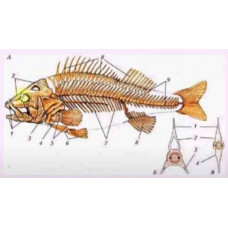From the Greek biōn - element of life, literally - living.
A branch of cybernetics and biology that studies the possibility of using features of the structure and vital functions of organisms (orientation, localisation, navigation, information processing, etc.) in technology.
A science at the interface between biology and engineering that solves engineering problems by analysing the structure and vital functions of organisms. Bionics is closely linked to biology, physics, chemistry, cybernetics and engineering - electronics, navigation, communications, naval engineering, etc.
The study of morphological features of living organisms provides new ideas for engineering design. For example, the study of the structure of the skin of fast-moving aquatic animals (e.g. dolphin skin is not wetted and has an elastic-elastic structure which ensures the elimination of turbulent eddies and gliding with minimal resistance) has made it possible to increase the speed of ships. A special skin - artificial skin "Laminflo" - has been created, which has made it possible to increase the speed of sea-going vessels by 15-20%.
New technologies based on biochemical processes occurring in organisms are also a problem of bionics. In this respect, the study of biosynthetic processes, bioenergetics, is of great importance because energetic biological processes (e.g. muscle contraction) are extremely economical. At the same time as technology advances, the success of bionics also benefits biology itself by helping to actively understand and simulate certain biological phenomena or structures.
A distinction is made between:
Biological bionics, which studies the processes that occur in biological systems;
Theoretical bionics, which builds mathematical models of these processes;
Engineering bionics, which applies theoretical bionics models to solve engineering problems.
The main areas of work in bionics cover the following problems
The study of the human and animal nervous systems and the modelling of neurons and nerve networks in order to further improve computer technology and develop new elements and devices for automation and telemechanics (neuro-bionics);
Study of sensory organs and other perceptive systems of living organisms in order to develop new sensors and detection systems;
Study of the principles of orientation, positioning and navigation in various animals for use in technology;
Study of morphological, physiological, biochemical features of living organisms for the development of new technical and scientific ideas.
Bionics
Tags: Bionics

